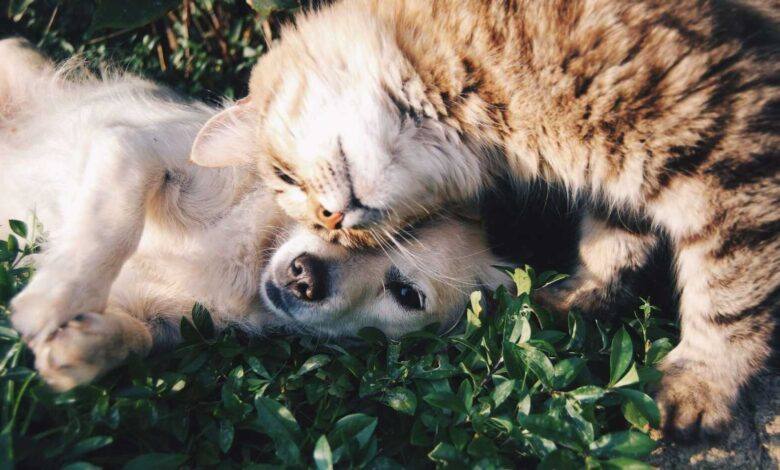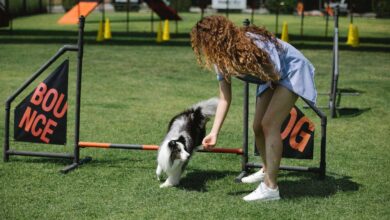Training for Multiple Pets: Harmony in a Multi-Pet Household

Living with a menagerie of furry and feathered friends can be incredibly fulfilling, but it also comes with its unique set of challenges. Ensuring that multiple pets coexist harmoniously while responding to commands and sharing resources is essential for maintaining peace and happiness in your multi-pet household. Whether you have several dogs, cats, or a combination of different species, this comprehensive guide will walk you through the steps to achieve harmony through training.
The Importance of Training Multiple Pets
Bringing multiple pets under the umbrella of training offers several significant advantages:
- Peaceful Coexistence: Training fosters a sense of respect and boundaries among pets, reducing conflicts and aggression that may arise in a multi-pet home.
- Safety First: Well-trained pets are less likely to engage in risky behaviors, ensuring their safety, particularly in potentially hazardous situations.
- Enhanced Behavior: Training enhances obedience, making it easier to manage the behavior of multiple pets, even in chaotic moments.
- Stress Reduction: Pets in a well-trained household tend to experience lower stress levels, leading to a more relaxed and contented atmosphere for everyone.
- Stronger Bond: Training sessions provide a valuable opportunity for pets and their human companions to bond, thereby strengthening the human-pet relationship.
Tips for Training Multiple Pets
1. Individual Training Comes First
Embark on your training journey by focusing on each pet individually. This approach allows you to establish a strong foundation for obedience and ensures that each pet comprehends basic commands effectively.
2. Keep It Short and Fun
Pet training sessions should be engaging and enjoyable. Keeping sessions short and sweet is more effective than long, tedious ones. Always strive to end on a positive note to keep your pets motivated for the next training session.
3. Harness the Power of Positive Reinforcement
Positive reinforcement techniques, such as using treats, verbal praise, and favorite toys, are potent tools for encouraging desired behaviors. Aim to reward your pets for correct actions and discourage negative behavior gently rather than through punishment.
4. Patience and Consistency Are Key
Exercising patience and maintaining consistency are fundamental aspects of successful training. Each pet is unique and may learn at a different pace, so adapt your approach to cater to individual needs. Consistently use the same commands to avoid confusion among your pets.
5. Resource Management
To prevent conflicts among your pets, resource management is essential. This entails feeding them in separate areas, providing individual water bowls, and allocating personal toys and beds. As their training progresses, you can gradually reintroduce shared resources.
6. Supervision Is Paramount
Always supervise interactions among your pets, especially during the initial stages of training or when introducing a new pet to the household. Be ready to intervene to redirect behavior or defuse potential conflicts as needed.
7. Seek Professional Guidance When Necessary
If you find yourself facing challenges or serious behavioral issues in your multi-pet household, don’t hesitate to seek assistance from a professional animal behaviorist or trainer. They can provide tailored guidance and strategies suited to your specific situation.
Training Multiple Pets for Different Purposes
Training multiple pets often involves various objectives tailored to your pets’ roles and requirements:
1. Training Multiple Dogs
- Walking Together: Train multiple dogs to walk on a leash together without pulling or tugging, ensuring enjoyable and stress-free walks.
- Sharing Resources: Teach dogs to share toys, food bowls, and playtime without resource guarding, promoting a spirit of camaraderie.
- Getting Along: Promote socialization and teach dogs to coexist peacefully, enhancing the overall harmony in your household.
2. Training Multiple Cats
- Litter Box Sharing: Train cats to use the same litter box or multiple boxes without territorial issues, simplifying the management of multiple feline friends.
- Sharing Scratching Posts: Encourage cats to share scratching posts and cat trees, reducing conflicts over coveted scratching spots.
- Conflict Resolution: Teach cats effective ways to resolve conflicts without resorting to aggression, ensuring a peaceful coexistence.
3. Training Multiple Species
- Cohabitation Training: Train pets of different species to coexist safely and peacefully, creating an atmosphere of harmony in your diverse household.
- Sharing Space: Help pets share common spaces without stress or conflict, ensuring every pet feels comfortable and secure.
4. Specialized Training
- Therapy Work: Train multiple pets for therapy work, focusing on their specific roles and responsibilities in providing comfort and support to those in need.
- Detection Work: Teach pets to work together for detection tasks, such as search and rescue or scent detection, enhancing their collaborative skills.
Training multiple pets is a journey that demands time, patience, and dedication, but the rewards are immeasurable. A well-trained multi-pet household is a harmonious and joyful one, where every pet can thrive and coexist happily. Remember, the journey is as important as the destination, and with determination and the right







